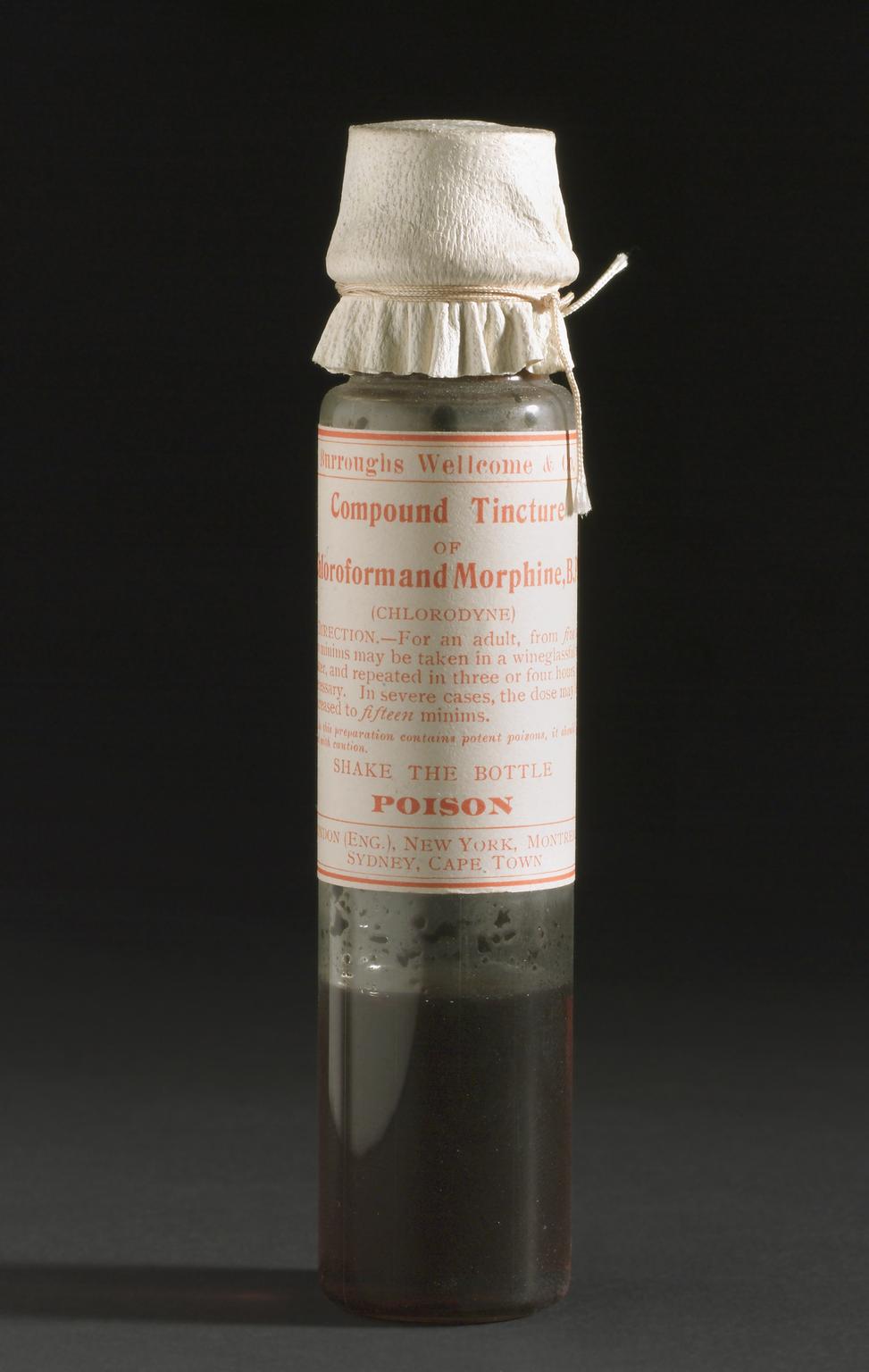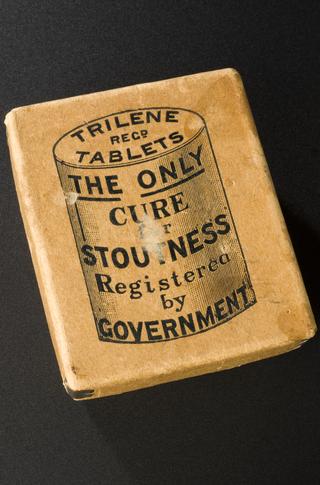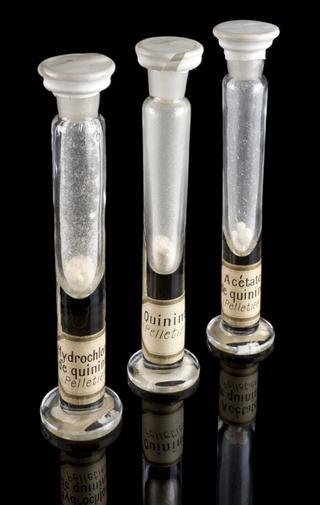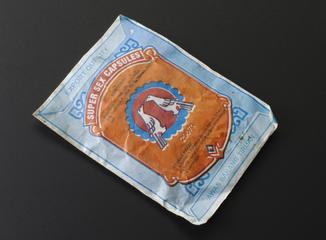Glass, circle based bottle, to contain tablets of Lead and Opium Lotion
Glass, circle based bottle with cork stopper covered in chamois leather. Paper label around bottle. To contain Soloid brand of tablets of Lead and Opium Lotion. Soloids are dissolved in water to make the lotion.
- Materials:
- opium , lead (metal) , glass , cork , leather and paper (fibre product)
- Object Number:
- 1981-1010 Pt1
- type:
- bottle














